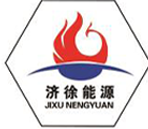
Dec . 12, 2024 20:26
Back to list
pressure reducing regulators
Understanding Pressure Reducing Regulators
Pressure reducing regulators (PRRs) are crucial components used in various industries to manage and control the pressure of gases and liquids. These devices function by lowering the inlet pressure of a fluid to a desired outlet pressure, ensuring that the fluid flows safely and efficiently through pipelines and equipment. This article will explore the importance, working principles, applications, and benefits of pressure reducing regulators.
Importance of Pressure Reducing Regulators
Pressure management is vital in several applications, from industrial processes to residential systems. If the pressure of a gas or liquid is too high, it can lead to equipment damage, unsafe operating conditions, and increased energy consumption. PRRs protect sensitive equipment from these dangers by maintaining consistent pressure levels, thus preventing potential hazards.
In industries such as oil and gas, chemical manufacturing, and HVAC (heating, ventilation, and air conditioning), the use of pressure reducing regulators is particularly significant. They ensure the stability and reliability of processes, contributing to the overall safety and efficiency of operations.
Working Principles
The primary function of a pressure reducing regulator is to modulate the pressure of a fluid. The mechanism typically consists of a diaphragm, spring, and a set of valves. When fluid enters the regulator, it faces the diaphragm, which is subjected to the inlet pressure.
As the inlet pressure increases, it compresses the diaphragm against a spring. The degree of the diaphragm's movement controls a valve that regulates the flow of fluid to the outlet. As the outlet pressure approaches the desired set point, the diaphragm’s movement reduces, closing the valve to limit further flow. This feedback mechanism allows for accurate pressure control, ensuring that the outlet pressure remains stable despite variations in inlet pressure.
Applications
Pressure reducing regulators have a wide range of applications across different sectors. In residential settings, they are often used in gas supply systems, ensuring that natural gas is delivered at a safe and usable pressure for appliances like stoves, ovens, and heaters.
In industrial applications, PRRs are employed in processes such as welding, where they maintain the pressure of gases like oxygen and acetylene. These regulators are also critical in laboratory settings where precise control of fluid pressure is necessary for experiments and research.
pressure reducing regulators

Moreover, in the water supply sector, pressure reducing valves help manage water pressure in municipal systems, preventing pipe bursts and water wastage
.Benefits of Using Pressure Reducing Regulators
The implementation of pressure reducing regulators offers several benefits
1. Safety By preventing overpressure conditions, PRRs reduce the risk of leaks, explosions, and equipment failures.
2. Efficiency Maintaining optimal pressure levels ensures that machinery operates efficiently, reducing energy consumption and operational costs.
3. System Longevity By protecting equipment from pressure-related damage, PRRs enhance the lifespan of pipelines, valves, and other components.
4. Versatility Pressure reducing regulators can be used with various media, including gases and liquids, making them suitable for diverse applications.
5. Ease of Maintenance Most PRRs are designed for easy installation and maintenance, which can help in minimizing downtime.
Conclusion
Pressure reducing regulators are essential tools in managing fluid pressures across a variety of industries. Their ability to provide a safe, efficient, and reliable flow of gases and liquids makes them indispensable in today's technology-driven world. Understanding their working principles and benefits can help organizations and individuals make informed decisions about their use, ultimately ensuring safety and efficiency in fluid management systems. As industries continue to grow and evolve, the role of pressure reducing regulators will undoubtedly remain vital in maintaining effective and secure operations.
Latest news
-
Safety Valve Spring-Loaded Design Overpressure ProtectionNewsJul.25,2025
-
Precision Voltage Regulator AC5 Accuracy Grade PerformanceNewsJul.25,2025
-
Natural Gas Pressure Regulating Skid Industrial Pipeline ApplicationsNewsJul.25,2025
-
Natural Gas Filter Stainless Steel Mesh Element DesignNewsJul.25,2025
-
Gas Pressure Regulator Valve Direct-Acting Spring-Loaded DesignNewsJul.25,2025
-
Decompression Equipment Multi-Stage Heat Exchange System DesignNewsJul.25,2025

